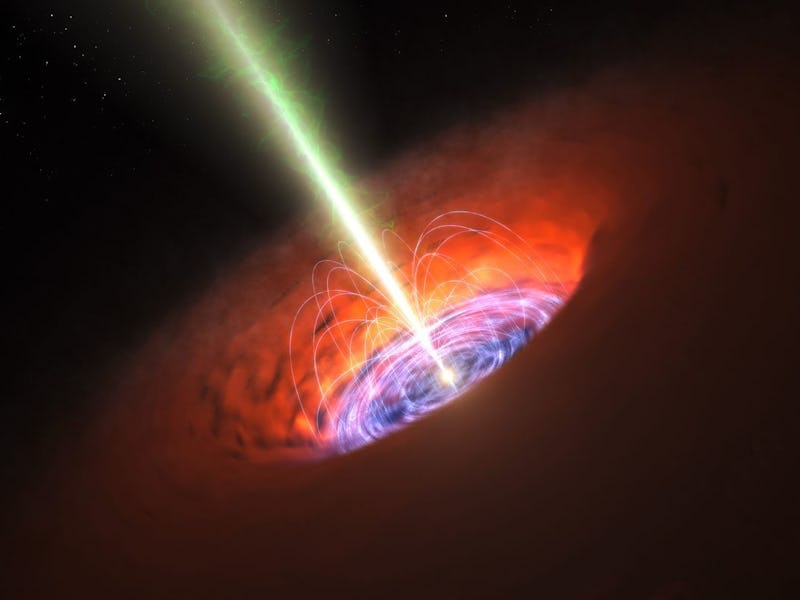We all know there’s a super hungry black hole at the center of our galaxy called Sagittarius A*. But a physicist tells Inverse his new research suggests there could be tens of thousands of black holes in the heart of the Milky Way.
“There has been a multi-decades long prediction that there ought to be some huge number like 10,000 to 20,000 black holes at the center of the galaxy…but there hasn’t been any solid evidence,” Chuck Hailey, co-director of the Columbia Astrophysics Laboratory, tells Inverse. “I was always struck by that fact.”
By observing x-ray emissions around the center of the Milky Way, Hailey and his team found a dozen black holes in an area stretching about 3 light-years outward from Sagittarius A*. This region is full of gas and dust, which allow for stars to grow and eventually, die. Their corpses become black holes, some of which remain solitary (or “isolated”) while others pair with another star to form a black hole binary. These binaries emit a certain, predictable level of x-rays that Hailey and his team were able to detect. Their calculations predict that there could be tens of thousands of black holes in the center of the galaxy, in an area roughly six light-years wide.
The team’s research has been published in Nature.
Artist's rendition of a black hole.
It’s tough to spot isolated black holes in this region, because the ultra hot gas that gives rise to stars also glows in x-rays that Hailey and his team use to scope out black holes.
“It’s pretty annoying,” Hailey says. “The most common dead stars called white dwarfs also like to emit x-rays, and the center of the galaxy is filled with white dwarf binaries or ‘zombie stars.’ It’s tough to distinguish these things from the black holes.”
Discovering an army of black holes is a pretty cool discovery in and of itself. But this research could help the astrophysics community, particularly scientists studying gravitational waves. These ripples in the fabric of space-time, which can come from black hole mergers, are the “hottest topic” right now, Hailey says.
“This could be a stepping stone for gravitational wave astronomers,” he explains. “It could be something for gravitational wave theorists to check their models against.”
Most importantly, this research offers us non-scientists a lesson in perspective: No matter what’s stressing you out today, just remember that there are 10,000 to 20,000 black holes in the center of our galaxy. Our human grievances mean nothing in the vacuum of time and space. Three cheers for infinite meaninglessness!
